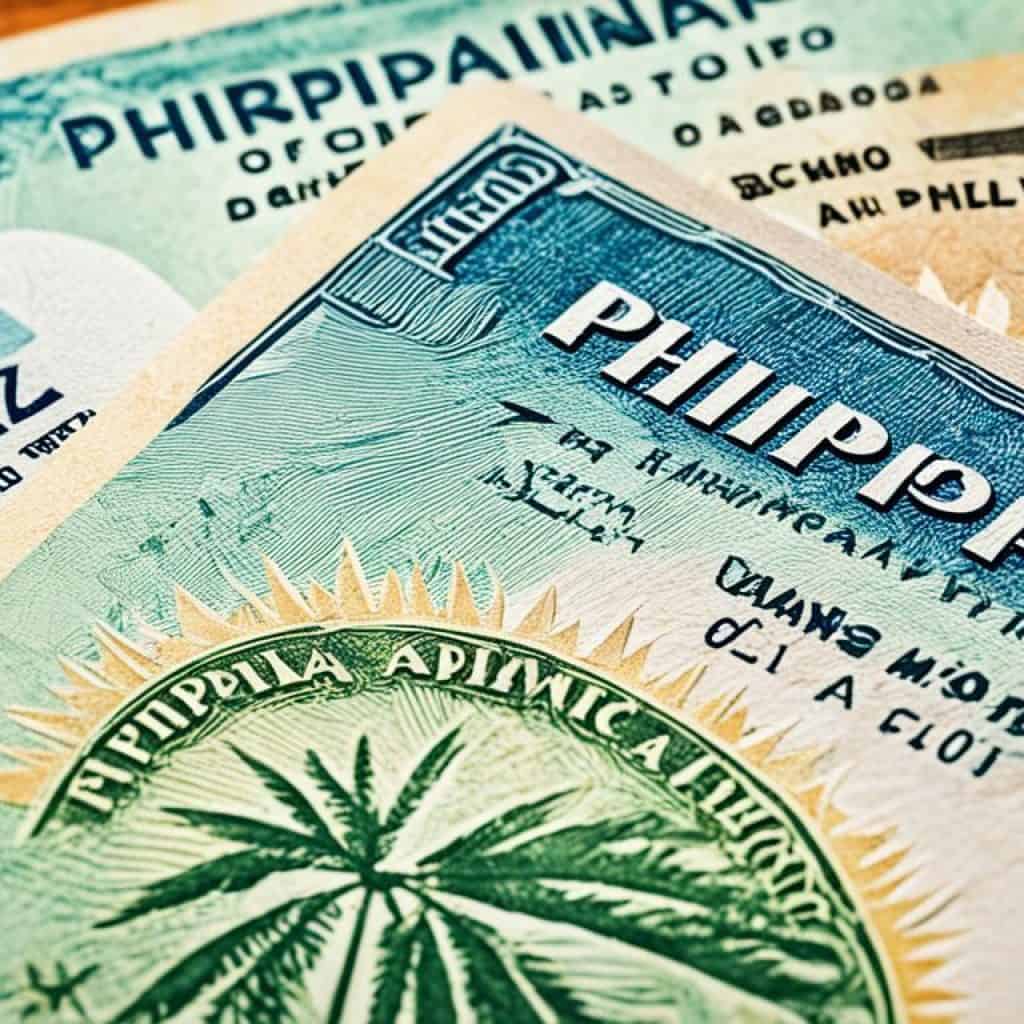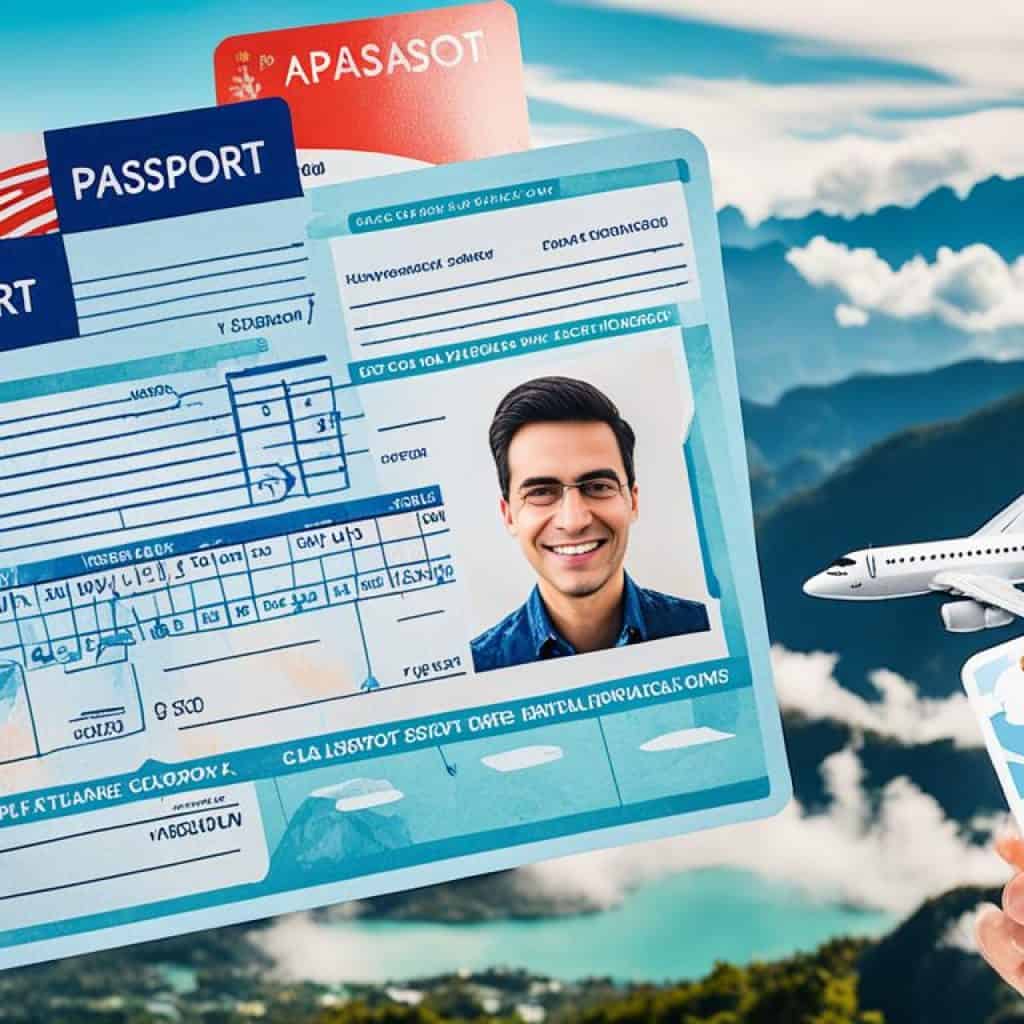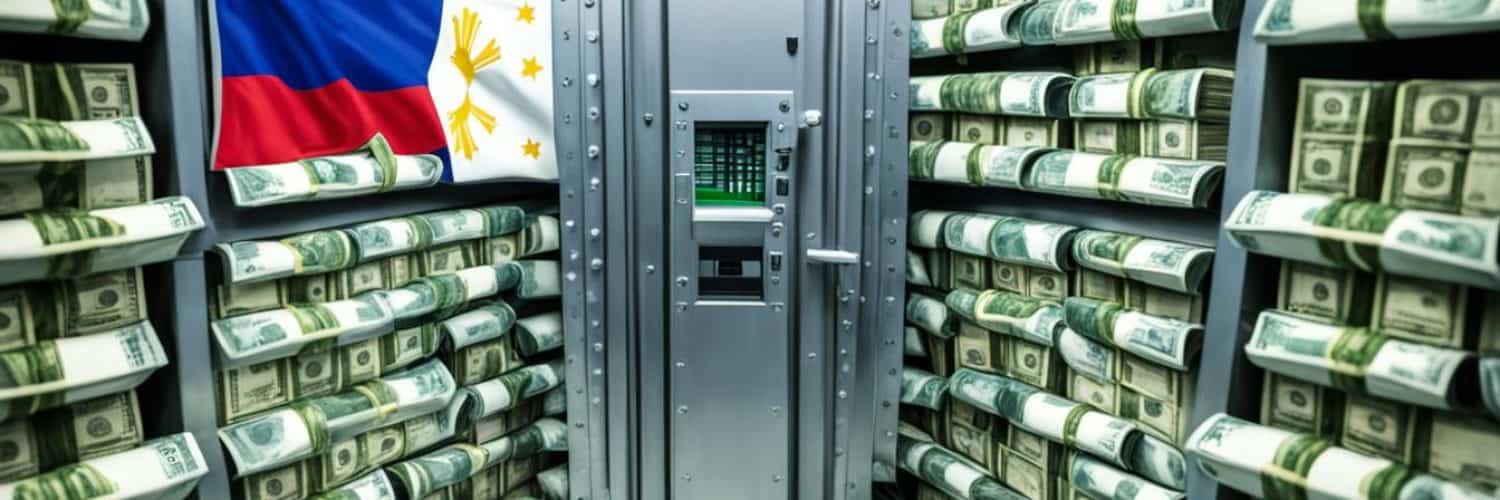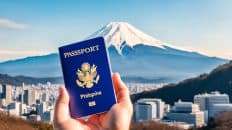Are you planning a trip to the beautiful Philippines? Before packing, there’s a vital requirement to note – your bank balance. It’s not just about having money for the trip. For the Philippines visa, you must show a certain bank balance to prove you’re financially fit. But, what is this amount? Let’s dive into this key factor that could impact your visa application.
Key Takeaways:
- The bank balance is a crucial requirement for obtaining a Philippines visa.
- It serves as proof of your financial capacity to travel to the country.
- The required bank balance varies depending on the purpose and duration of your visit.
- Consolidating your funds into one account can simplify the visa application process.
- Ensure your bank statements reflect a consistent financial activity to increase your chances of approval.
Importance of Bank Balance for Philippines Visa
The bank balance is key in the Philippines visa process. It proves you can handle your expenses during your visit. It’s how consulates and embassies check if you meet visa financial rules.
To show you’re financially stable, share your bank statements. These statements need a stamp from the Ministry of Foreign Affairs. They show you have enough money for your stay in the Philippines. This includes the cost for places to stay, travel, meals, and more.
A good bank balance shows you can manage money well while abroad. This makes the consulate confident. It also ensures you won’t need financial help from the Philippines.
If your bank balance is too low, you might not get the visa. So, it’s important to know the money requirements well. Make sure your bank account meets these before applying.
Knowing why a good bank balance matters can help get your visa. It proves you follow visa rules. Plus, it shows you’re good at handling money while in the Philippines.
Ideal Bank Balance for Philippines Visa
If you’re planning to visit the Philippines, knowing the right bank balance is key. It shows you can afford your stay. For a 30-day tourist visa, you should have at least $1000. Planning to stay longer? You’ll need an extra $2000. The embassy sets these amounts to make sure travelers can handle their expenses.
Remember, visa requirements for the Philippines can change based on your plans and situation. The embassy looks at each case carefully. They consider why you’re visiting, how long you’ll stay, and your budget. Showing you meet the bank balance requirement helps get your visa approved. It makes your travel smoother.
“Having the appropriate bank balance is crucial in obtaining a Philippines visa. It demonstrates your financial capability to cover your expenses and helps build trust with the embassy or consulate.”
Understanding the Philippines Tourist Visa
If you’re planning a trip to the beautiful Philippines for fun, the tourist visa is perfect. Going to see family, friends, or just to see the stunning spots, it’s your ticket to amazing experiences.
This visa is flexible for travelers. You can choose between a single-entry or multiple-entry visa based on your needs. A single-entry visa lets you visit once. A multiple-entry visa allows you to come and go many times.
Want to stay longer? You can apply for a visa extension. You will need to meet some conditions, like showing you have enough money. The embassy or consulate might ask for proof of your funds for your extended visit.
Exploring the stunning white sandy beaches, vibrant city life, and rich cultural heritage of the Philippines has never been easier with the Philippines tourist visa. Discover the warmth and hospitality of the Filipino people while creating unforgettable memories during your visit.
Requirements for the Philippines Visa
To get a Philippines visa, you have to meet some criteria. You need:
- Completing the visa application form
- Possessing a valid passport with at least 6 months of validity
- Providing a passport photo
- Submitting a travel itinerary
- Presenting flight and accommodation details
- Submitting original bank statements and evidence of the required bank balance
Also, you must pay a visa fee. This fee changes based on the visa type and how long it lasts. Make sure to check the latest fee information to pay the right amount.
When applying, giving all needed documents is vital. Not doing so can cause delays or your application to be denied. Thus, it’s smart to double-check the requirements and have your documents ready beforehand.
| Requirement | Description |
|---|---|
| Visa Application Form | Complete the official visa application form accurately and legibly. |
| Valid Passport | Ensure that your passport is valid for at least 6 months beyond the intended duration of your stay. |
| Passport Photo | Provide a recent passport-sized photo that meets the specifications of the embassy or consulate. |
| Travel Itinerary | Submit a detailed itinerary of your travel plans, including dates, destinations, and activities. |
| Flight and Accommodation Details | Present confirmed flight tickets and hotel reservations for your stay in the Philippines. |
| Bank Statements | Submit original bank statements that demonstrate your financial capacity to cover your expenses during your stay. These should reflect the required bank balance specified by the embassy or consulate. |
Remember, the requirements can change based on the visa type and visit purpose. So, it’s best to check the Philippine Embassy or Consulate’s official website in your country for up-to-date and correct details.
Applying for a Philippines Visa
You can apply for a Philippines visa in two ways for ease and flexibility. Visit the Philippine Embassy or Consulate personally, or apply online through sites like VisaHQ.
Visiting the Philippine Embassy or Consulate? Make an appointment ahead. This helps you get ready and ask questions. Embassy staff will help you apply and answer your questions.
Applying online through platforms like VisaHQ is simple too. They tell you what you need and how to apply for your visa. You can fill out the form, upload documents, and pay online securely.

After you send your documents and pay the fee, wait for your visa. Make sure your information is right to avoid delays. These convenient options make it easier and stress-free to get a Philippines visa.
Consolidating Funds for Visa Application
Putting your bank funds into one account for a visa application is a smart move. It lets you show a single bank statement that meets the visa’s financial needs. It’s important to make sure this statement shows enough money, as the embassy asks.
Moving your money into one account makes it easier to show how much you have. You won’t need to juggle different bank statements. This makes things clearer for you and those reviewing your application.
This way of organizing your money helps the embassy or consulate check your funds faster. They can see if you have enough money by looking at just one statement. This saves time and keeps things simple.
Grouping your bank funds for a visa shows you’re ready and serious about following visa rules. It provides a full view of your money, showing you can pay for your trip and stay.
When you’re grouping your funds, pick an account that meets the visa’s rules. Always check with the embassy for more details on how to do this right.
| Benefits of Consolidating Funds for Visa Application |
|---|
| Streamlines documentation process |
| Provides a comprehensive financial snapshot in a single bank statement |
| Enables easier calculation and presentation of the required bank balance |
| Simplifies the verification process for the embassy or consulate |
| Reduces the chances of confusion or misinterpretation |
Additional Considerations for Visa Applications
When you apply for a visa needing bank statements, keep some things in mind. Keeping your money in one account makes showing your funds easier. But, showing regular money movement is key. Embassies look at your account actions to check if your funds are real. This proves you can financially support your visa.
It helps your visa application to show steady money handling. Avoid sudden big deposits or withdrawals. They might make the embassy suspicious. Showing money coming in and out regularly proves you’re financially solid.
“Maintaining a transparent and consistent financial activity in your bank statements is crucial. Embassies carefully scrutinize the transaction history to ensure the legitimacy of your funds and your ability to cover your expenses during your stay in the country.” – Visa Expert
Visa officers look at your whole financial situation. When your income comes from various places, or you have money in different accounts, explain it well. Showing where your money comes from and goes can convince the embassy you have enough money.
Practical Tips for Visa Funds Distribution:
- Clearly label and provide explanations for funds in multiple accounts, detailing the purpose and origin of each account.
- Provide supporting documents such as pay stubs, employment contracts, or rental agreements to establish the legitimacy of your financial sources.
- Maintain organized records of your financial transactions, including bank statements, tax returns, and investment portfolios if applicable.
- Consult with a financial advisor or immigration lawyer for guidance on how to present your financial situation effectively.
By focusing on these points and making sure your bank statements show steady and real financial actions, your visa application stands a better chance. Always review the visa needs carefully. If necessary, get help from professionals for a smooth application process.

Conclusion
Having enough money in your bank is key to getting a Philippines visa. It shows you can afford your stay. This is true whether you’re visiting as a tourist or staying longer.
The amount of money you need varies with your visit’s purpose and length. It’s crucial to meet the embassy’s minimum balance requirement. You might put all your money in one account or spread it across several.
Meeting the bank balance requirement is crucial for your visa application. Make sure your bank balance is enough. Also, give the embassy bank statements approved by the Ministry of Foreign Affairs. This proves you’re ready for your journey to the Philippines.


















Add comment